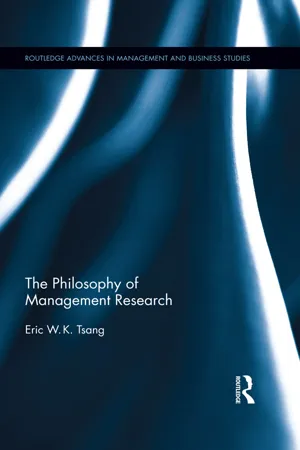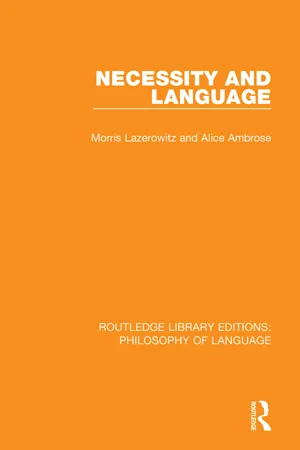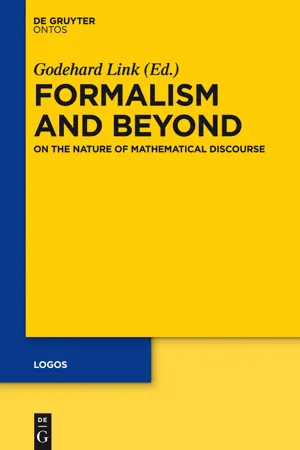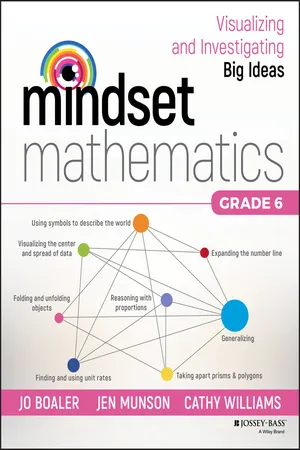Mathematics
Generalization and Conclusions
Generalization in Mathematics refers to the process of extending a specific result or concept to a broader class of situations. Conclusions, on the other hand, are the final outcomes or deductions drawn from a set of premises or observations. In Mathematics, generalization and conclusions are essential tools for developing new theories and solving complex problems.
Written by Perlego with AI-assistance
Related key terms
5 Key excerpts on "Generalization and Conclusions"
- eBook - ePub
- Eric W.K. Tsang(Author)
- 2016(Publication Date)
- Routledge(Publisher)
2006). This chapter focuses on case studies rather than the broad domain of qualitative research partly because some of the qualitative methods, such as ethnography, are rather rare in management research and partly because case studies are the most popular qualitative method used by management researchers (Welch et al. 2013) and are also increasingly popular among social scientists (Gerring 2007). 2 A classification of induction Following Schwandt (1997: 57), generalization is defined as a “general statement or proposition made by drawing an inference from observation of the particular.” 3 This characterization of generalization is consistent with that proposed by logicians, such as Cohen and Nagel (1934), Copi and Cohen (1990), and Hurley (2003). In empirical research, generalization is an act of inferring from specific, observed instances, such as those in a case setting, to general statements. As discussed below, generalization is sometimes confounded with its closely related concept, induction, which refers to inference from matters of fact that we have observed to those we have not (Cambridge Dictionary of Philosophy 1999: 745). Induction has a broader meaning than generalization because generalization denotes a directional inference from something particular to something more general whereas induction does not. There are at least two forms of induction that are not generalization. One of these is what logicians call “statistical syllogism” (Gensler 2001), for example: P1 Nearly all senior accounting managers in the U.K. have college degrees. P2 Tom is a senior accounting manager in the U.K. C Tom has a college degree. This inference is inductive because it goes from observed matters of fact (P1 and P2) to unobserved matters of fact (C). Yet the inference goes from a general premise and a particular premise to a particular conclusion - eBook - ePub
- Morris Lazerowitz, Alice Ambrose(Authors)
- 2016(Publication Date)
- Routledge(Publisher)
6 MATHEMATICAL GENERALITYInduction is the process of discovering general laws by the observation and combination of particular instances. It is used in all sciences, even in mathematics … We may observe, by chance, that 1 + 8 + 27 + 64 = 100 and, recognising the cubes and the square, we may give to the fact we observe the more interesting form13 + 23 + 33 + 43 = 102 .… Does it often happen that such a sum of successive cubes is a square? … In asking this we are like the naturalist who, impressed by a curious plant or a curious geological formation, conceives of a general question. Our general question is concerned with the successive cubes13 + 23 + 33 + 43 + … + n3We are led to it by the ‘particular instance’ n = 4…. The special cases n = 2,3 are still simpler, the case n = 5 is the next one…. Arranging neatly all these cases, as a geologist would arrange his specimens of a certain ore, we obtain the following table:1 = 1 = 121 + 8 = 9 = 321 + 8 + 27 = 36 = 621 + 8 + 27 + 64 = 100 = 1021 + 8 + 27 + 64 + 125 = 225 = 152 .It is hard to believe that all these sums of consecutive cubes are squares by mere chance…. In a similar case, the naturalist would have little doubt that the general law suggested by the special cases heretofore observed is correct. Here the following theorem is strongly suggested by the induction:The sum of the first n cubes is a square.… In mathematics as in the physical sciences we may use observation and induction to discover general laws. … Many mathematical results were found by induction first and proved later. Mathematics presented with rigour is a systematic deductive science but mathematics in the making is an experimental inductive science.1This quotation presents an illustration of the analogies mathematicians find between mathematical and empirical investigations. It makes number theory appear ‘as the natural history of the domain of numbers’,2 and it seems entirely natural that it should do so. Proceeding ‘by induction from numerical examples’,3 a mathematician will frequently describe his examination of special cases as confirming a conjecture, or supporting a generalisation, and go on to predict that subsequent ‘empirical evidence’4 will bear out the conjecture or generalisation. Propositions which have been ‘reached and stated as probably true by induction’5 - eBook - ePub
- Chris Sauer, Leslie P. Willcocks, Mary C. Lacity, Chris Sauer, Leslie P. Willcocks, Mary C. Lacity(Authors)
- 2015(Publication Date)
- Palgrave Macmillan(Publisher)
One of these is what logicians call statistical syllogism (Gensler, 2001) 2 and another is what logicians call inductive analogy (Copi and Cohen, 1990; Hurley, 2003) 3. Both of these forms of inference are inductive because they go from observed matters of fact to unobserved matters of fact. But in both cases the inference goes from particular premises to a particular conclusion and so are not generalizations. We also showed that that their characterization of generalization contradicts their own definition of it (2012: 734). They cite the Oxford English Dictionary (1989) when defining generalize as ‘to form general notions by abstraction from particular instances’ (2003: 221). Yet they asserted that ‘the generalizability of an IS theory to different settings is important’ (2003: 221). Their idea of generalizing from theory (i.e., general notions) to settings (i.e., particular instances) simply contradicts their own adopted definition of generalization, which refers to forming general notions by abstraction from particular instances. We showed that their distinction between empirical and theoretical statements faces two objections. They said that Empirical statements can refer to data, measurements, observations, or descriptions about empirical or real-world phenomena, while theoretical statements posit the existence of entities and relationships that cannot be directly observed, and hence can only be theorized (2003: 232). But this cannot serve as a definition because it is circular. To understand what makes a statement empirical we must first understand what makes real-world phenomena empirical (2012: 735). Second, theoretical statements need not posit the existence of entities and relationships that cannot be directly observed. They may or may not posit them. Newton’s laws of motion certainly constitute a theory, but they are about observable relations between perfectly ordinary, observable objects. (2012: 735) - eBook - ePub
- Godehard Link, Godehard Link(Authors)
- 2014(Publication Date)
- De Gruyter(Publisher)
Russell’s remark on Boole also makes clear that this has implications for the question how one should conceive of mathematics as a whole, and for the relationship between mathematics and meta-mathematics (these issues cannot be addressed here, however). Russell’s own attempts at giving a clear and comprehensive definition of mathematics in the opening paragraphs of the Principles of mathematics give clear evidence for how pressing this problem was for him at this period [48, § 1, p. 3]. 3 Ways into logic: Generalization and abstraction So far, three strategies for extending mathematics have emerged: the introduction of new (types of) objects, such as ; 241 working out the most basic principles; and the use of symbolism throughout the whole of mathematics. Obviously, these strategies are intimately related: accepting new types of objects at the same time implies a decision as to which axioms or basic propositions should be preserved, and symbolic language seems required to pursue these goals. They all lead to a generalization of mathematics beyond its current limits. All of these generalizing strategies find counterparts in, and are embedded into, discourses about generalization in other fields, most notably in philosophy. In all those fields, 19 th -century mathematicians such as Hermann Grassmann – being perhaps the most prominent source of inspiration for the new interest in generalization (on Grassmann, see now [41]; see also [55, ch.VI]) – or William Hamilton come to play a central role. It is thus not only debates that focus explicitly on the foundations of mathematics that one should consider when trying to grasp the significance of innovations in mathematics in this period - Jo Boaler, Jen Munson, Cathy Williams(Authors)
- 2019(Publication Date)
- Jossey-Bass(Publisher)
BIG IDEA 8 GeneralizingThe big idea that is at the center of this set of activities—generalizing—is an action that could represent all of mathematics. When teachers share methods with students, they are showing them something that is general—an idea that always works. For example, we know that multiplying a natural number by 10 results in a zero being added to the number. The problem that arises in many mathematics classrooms is that teachers show a general idea, one intended to help students focus on the underlying concept, but students think it is a specific method they should memorize. The same problem can come up when teachers show any method—for example, the multiplication algorithm or a method for working out ratio. A good way to show new ideas is to share that something general is happening—something that always happens—and teach students that their role in mathematics is always to work out what is particular in a situation and what is general. Each activity in this set is conceptually interesting and offers students occasions to study numbers and patterns, which is valuable in its own right. The activities have also been designed to give opportunities for students to think: What is particular and what is general? This question is at the center of the work of mathematicians, who study patterns to make general statements that ultimately lead to mathematical proofs.In the Visualize activity, students are presented with a display of data and asked what it represents. This is a great occasion for students to struggle, as it is not obvious what the data display represents, but it is something students will be able to work out through exploration and investigation. When the display is presented to the class, students will probably have lots of ideas and conjectures about what they think the data in the pattern represents. The line plot actually shows the number of factors for each number. We are really excited about this activity, and we think students will embrace the challenge of the number mystery. In this activity, help students produce general statements and consider together how generalizable they are. For example, they may say that odd numbers have shorter stacks. Is that a generalizable statement? Is it always true? It is good to ask students why their observations exist, to help them think about the structure of numbers and reason about them.
Index pages curate the most relevant extracts from our library of academic textbooks. They’ve been created using an in-house natural language model (NLM), each adding context and meaning to key research topics.




